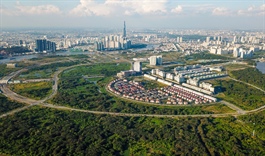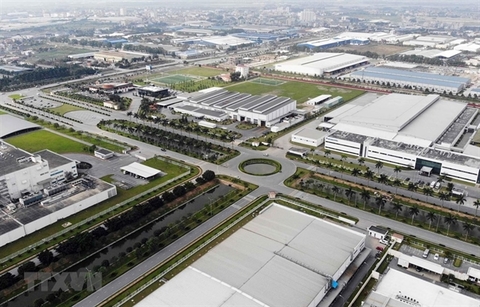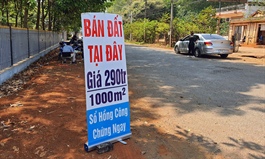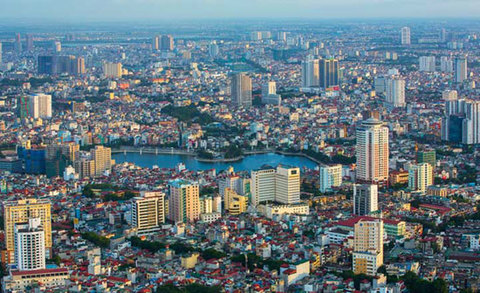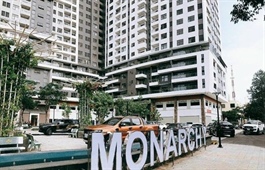Charting course of land price frenzy
Charting course of land price frenzy
The State Bank of Vietnam is closely monitoring the real estate market to avoid any breakdowns as a large-scale land fever has gripped the country in recent months. Dr. Phan Minh Ngoc, senior credit research analyst at Bondcritic Ltd. in Singapore, writes about the ramifications of the situation.

Dr. Phan Minh Ngoc, senior credit research analyst at Bondcritic Ltd. in Singapore
|
Since the end of 2020, the property market from the north to the south of Vietnam has become heated. However, due to the lack of a consistent, updated, and reliable set of property price indices, it is difficult to properly understand the level and scale of this property fever – if so one may call it – which is more than a decade removed from the most recent one.
Even so, anecdotes recount property prices rising sharply in many provinces and cities across the country, suggesting a property fever is already underway. For example, in Hanoi, following information that the concerned authority will announce the Red River urban subdivision planning in June, land prices in most of the planned areas (about 11,000 hectares administered by 13 districts in Hanoi) have rallied sharply, up to 50 per cent in just two weeks, according to press reports.
In Ho Chi Minh City, a similar situation came about as the city is considering converting some rural districts into urban districts or cities in for 2021-2030. These rural districts are Can Gio, Binh Chanh, Cu Chi, Hoc Mon, and Nha Be.
Property prices tending to increase faster in localities with new land planning schemes has made many to believe that the new land planning is the source of the current property frenzy – but this is only partially true.
In fact, many provinces and cities, including those experiencing the ongoing property fever, have at times announced new land use planning in the past. For instance, Ho Chi Minh City over the last five years announced land use schemes for its rural and urban districts in 2016, 2017, 2019, and 2020. Nevertheless, such land use scheme announcements had not caused any noticeable spikes in land prices in the affected areas.
Thus, the current property fever could have been triggered by another factor that is decisive and unique from 2020. That would be interest rate cuts by the State Bank of Vietnam (SBV) to support the country’s economic recovery and growth amid the pandemic.

Current intrigue into land prices up and down the country are partially being triggered by interest rate cuts. Photo: Dung Minh
|
In 2020, the SBV cut policy rates three times to a record low in more than two decades, and these low policy rates remain into 2021.
While there are no signs that the SBV will soon hike again its policy rates and, thus, short-term interest rates in Vietnam, the country’s 10-year treasury yield has rebounded, albeit moderately, from the low in mid-January 2021 in tandem with the rise of US treasury yield.
The rebound in Vietnam’s yield shows that the market expects long-term interest rates in Vietnam to go up. This has been happening not only in Vietnam but also in many other countries around the world.
Take Singapore as an example, where its 10-year treasury yield is also tracking closely its US counterpart. When asked about the impact of the rapid rise in US long-term interest rates in the city-state, Monetary Authority of Singapore chairman and senior minister Tharman Shanmugaratnam said, “Buyers (of property) should assume that interest rates will rise.”
Confronting such interest rate rise expectations, the SBV maintained that it aims to “create stability” for both deposit and lending rates for the coming time. This can be interpreted as if the SBV will continue to maintain interest rates at the current record low levels for a while.
If the SBV is determined and able to maintain interest rates at current low levels in the near future, this will have important implications for the current property fever. That is, the fever will continue to escalate, spread to other provinces and cities, and will last until the SBV reverses its policy stance and raises policy rates.
Meanwhile, being concerned over the economic and social consequences of the property fever, many experts based on experiences in dealing with property bubbles in regional countries such as Singapore and China have recommended a number of solutions that are not interest rate-related. These include heavily taxing the ownership of more than one property, increasing the minimum required time to hold a property before the owners can sell, and reducing maximum amounts of bank loans for second or subsequent properties.
However, the above-mentioned solutions will be difficult to apply in Vietnam in the next year or two. Specifically, a solution to cap loans for second or other properties will require banks to share data on the credit status of each customer, individual or institutional in the real estate sector via a centrally controlled data centre.
This is certainly unlikely in the near future, considering the legal and capacity limitations of the country’s banking system.
As for a taxation solution for second or subsequent properties, it has been actively discussed in the past many years but never seems to have been seriously considered.
Hence, the course of the current property fever will mainly be driven by the SBV’s monetary policy. However, it is worth mentioning that the SBV has recently referred to data of bank lending to the real estate sector, which did not spike sharply in the first quarter of 2021 compared to total bank lending to imply that low-interest credit is not the underlying cause of the property frenzy.
What the SBV did not discuss, however, is that the data on credit to the real estate sector may have been incomplete because many loans were provided for other purposes but still ended up in real estate.



